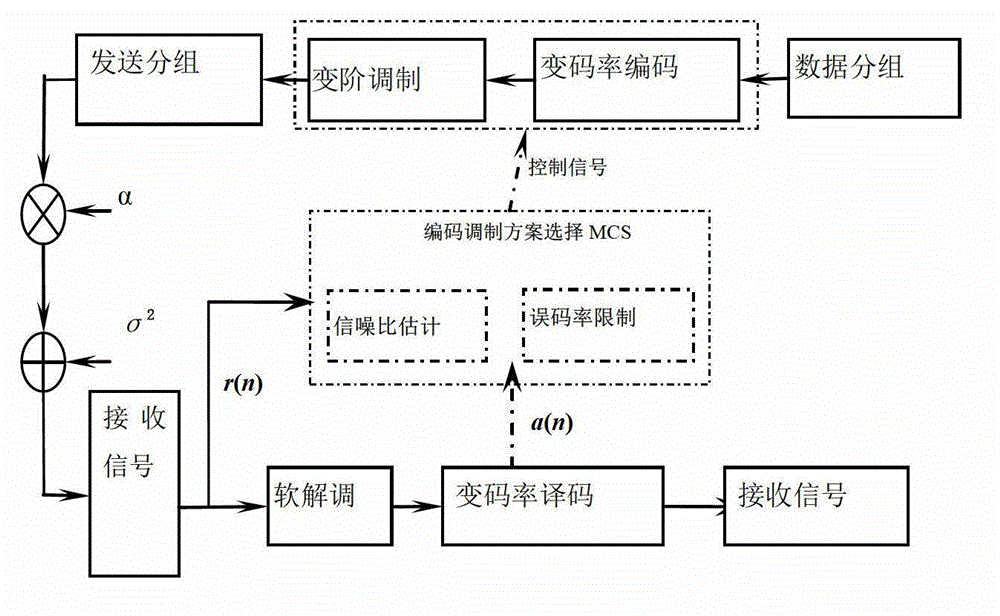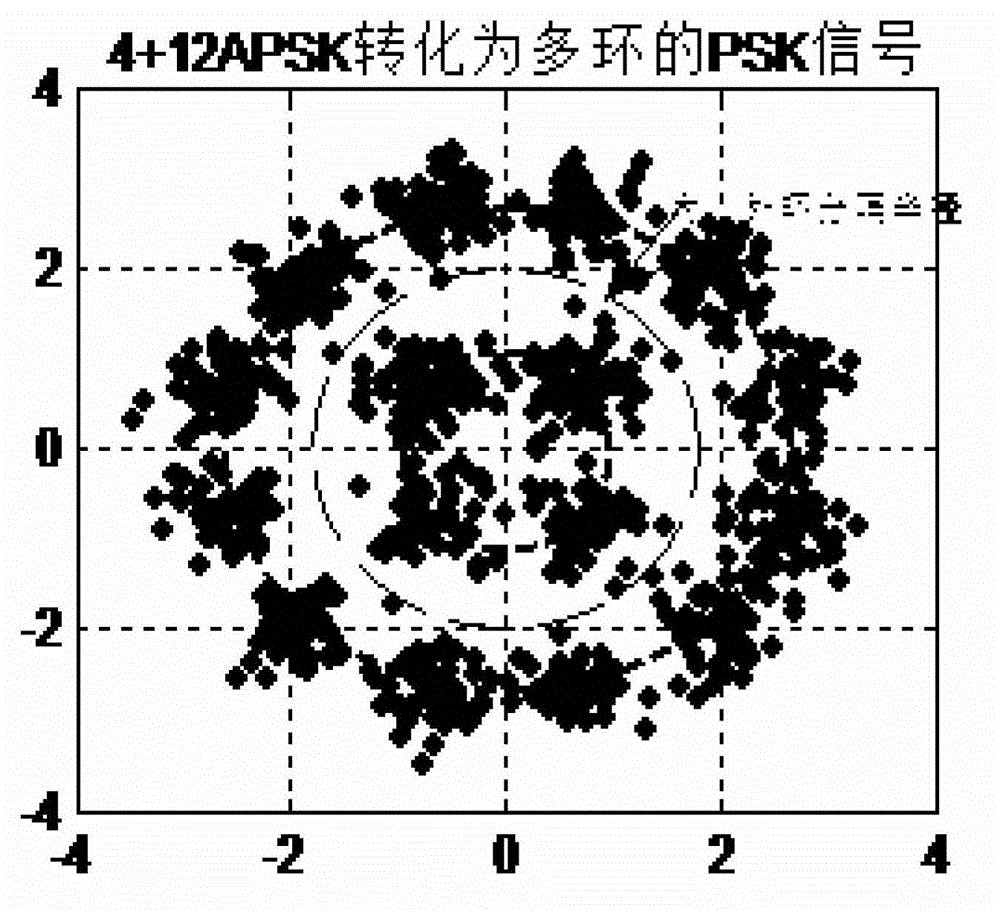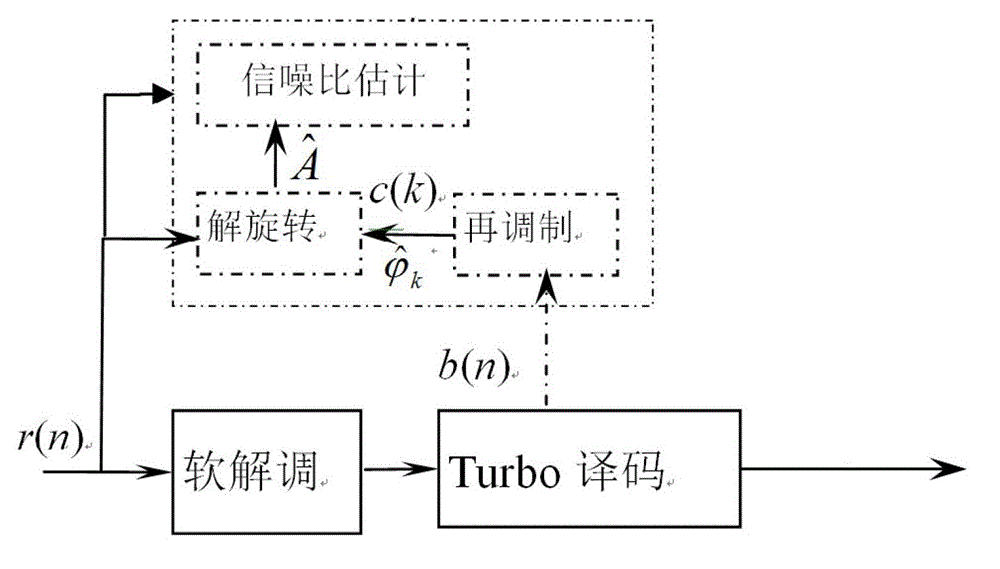M-APSK (amplitude phase shift keying) signal to noise estimation method based on iterative decoding and decision feedback
A technology of signal-to-noise ratio estimation and iterative decoding, which is applied in the field of satellite communication, can solve problems such as poor signal-to-noise estimation accuracy, low transmission efficiency, and large system overhead, so as to solve large errors, improve estimation accuracy, and avoid implementation and the effect of complexity problems
- Summary
- Abstract
- Description
- Claims
- Application Information
AI Technical Summary
Problems solved by technology
Method used
Image
Examples
Embodiment Construction
[0043] The present invention will be further described below in conjunction with the accompanying drawings.
[0044] The M-APSK signal-to-noise ratio estimation method based on iterative decoding and decision feedback of the present invention first uses the variable code rate decoder to obtain the feedback result of the transmitted signal, and then modulates to obtain a noise-free received signal, and the received signal is in the constellation Find the relative position on the figure, divide it into several rings, and then obtain the received signal of each ring by derotation, calculate the average value of the amplitude of the received signal of each ring, and calculate the total power and sum of the useful signal according to the average value of the amplitude The total power of the transmitted signal is used to calculate the estimated value of the signal-to-noise ratio. Using the idea of iterative estimation, the output information bits of iterative decoding are used for ...
PUM
 Login to View More
Login to View More Abstract
Description
Claims
Application Information
 Login to View More
Login to View More - R&D
- Intellectual Property
- Life Sciences
- Materials
- Tech Scout
- Unparalleled Data Quality
- Higher Quality Content
- 60% Fewer Hallucinations
Browse by: Latest US Patents, China's latest patents, Technical Efficacy Thesaurus, Application Domain, Technology Topic, Popular Technical Reports.
© 2025 PatSnap. All rights reserved.Legal|Privacy policy|Modern Slavery Act Transparency Statement|Sitemap|About US| Contact US: help@patsnap.com



